Search
Search Results
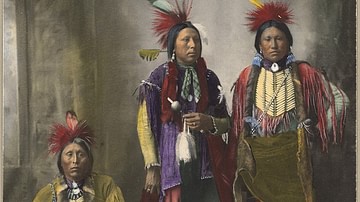
Article
Saynday Tales
Saynday tales are popular legends of the Kiowa nation featuring the trickster figure Saynday who, like other Native American tricksters, sometimes appears as a hero, sometimes as a villain, and other times as a clownish buffoon. Two of the...

Image
Attendant God Dedicated to Nabu
Limestone statue of attendant god dedicated to Nabu by Adad-Nirari III and Sammuramat. The figure was dedicated to Nabu, the god of learning, in the temple of Ezida at Calah by the governor of Calah and other cities, for the life of the king...

Image
Enoch Being Taken to Heaven by God
Enoch is taken up to heaven, chalk painting by Albertus Pictor (1440-1507) in Trave 2 of Härkeberga Church, Enköping, Sweden. The painting portrays the biblical character Enoch being taken to heaven by God. He was the son of Jared, the father...
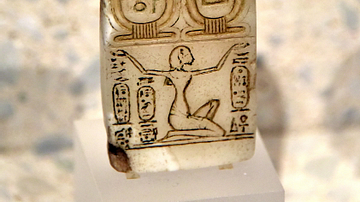
Image
Early Cartouche of the God Aten
Early cartouche of the god Aten, calcite alabaster. New Kingdom of Egypt, 18th Dynasty, 1351-1334 BCE. At the upper part of this votive plaque of the God Aten, there are two "early" cartouches of Aten. On the right, it reads "The living...

Image
God Separating the Land from the Water, Sistine Chapel
A panel from ceiling of the Sistine Chapel in the Vatican, Rome. The panel shows God separating the land from the waters. The ceiling was created between 1508 and 1512 CE by the Italian Renaissance artist Michelangelo (1475-1564 CE) and shows...
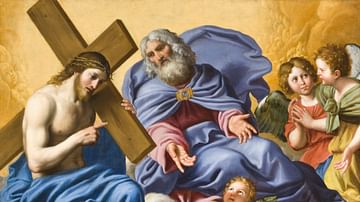
Image
Saint Ignatius of Loyola's Vision of Christ and God the Father at La Storta
Saint Ignatius of Loyola's Vision of Christ and God the Father at La Storta, oil on canvas by Domenichino, c. 1622.
Los Angeles County Museum of Art.

Image
Samuel Relating to Eli the Judgements of God upon Eli's House
Samuel Relating to Eli the Judgements of God upon Eli's House, oil on canvas by John Singleton Copley, 1780.
Wadsworth Atheneum Museum of Art, Hartford, Connecticut.
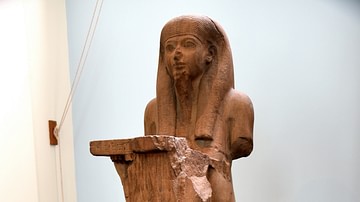
Image
Statue of the Nile God Hapy
Statue of the Nile God Hapy, from Thebes, Karnak, temple of Amun-Ra, Egypt, 22nd Dynasty, reign of Osorkon I, c. 924-889 BCE. The fleshy body symbolizes the Nile's fertility. Hapy holds a table of offerings, from which hang geese, quails...
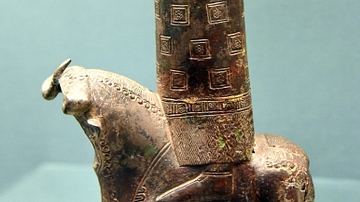
Image
Standing God on a Bull from Urartu
This is a bronze furniture-fitting (probably of a corner of a throne or bed). A god wearing a fringed robe stands on a recumbent bull. It was originally inlaid and gilded. From Toprakkale, Eastern Anatolia, in modern-day Turkey. Urartian...
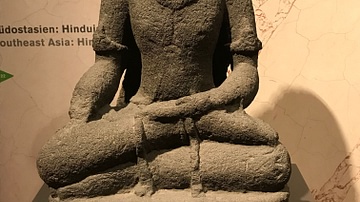
Image
Statue of the Hindu Moon God Chandra
This statue of the Hindu moon god Chandra is made from andesite and comes from the island of Java in what is now Indonesia. It dates from the late-9th to early-10th century CE. (Museum Rietberg, Zürich).